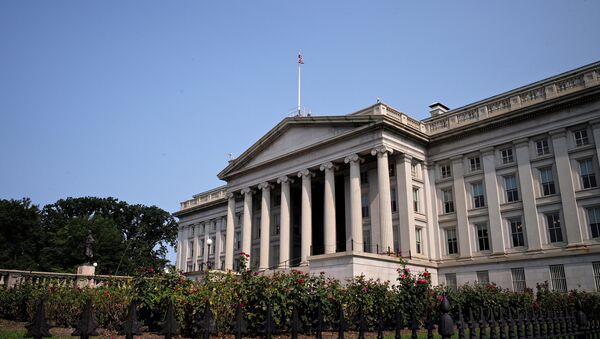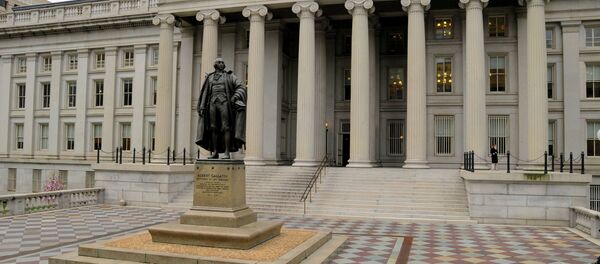Kristian Rouz – In an unexpected, positive signal for the US economy, the Treasury yield curve – the discrepancy between the yield on long-term and short-tern US governmental debt – steepened, reflecting a shift in capital from long-term bonds into other assets.
The overall conditions following the anticipated Fed move would remain unfavorable without a comprehensive policy overhaul. As a result, the released capital is finding its way into more speculative short-term debt.
Short-term debt is gaining momentum as higher-returning investment as the Fed has signaled that it is likely to abandon plans for a September increase in rates. 30-year Treasuries are now higher-yielding compared to 5-year notes as the 30-year value plunged due to the investor-perceived exposure to longer-term risks of lower returns amid higher inflation expectations. This steepening yield curve has been trending for the past nine days of debt trading, the longest period since 2012, and is a relief in an environment of lingering anticipation of a new recession.
“This market is not driven by the economic fundamentals here, nor in my opinion Fed policy in the long end of the market,” Charles Comiskey of the New York branch of Bank of Nova Scotia said. “It has to do with global interest rates.”
The long-term Treasury yield advanced 0.15pc on 10-year notes to 1.680pc. Typically, the longer-term yield reflects international interest rate expectations and effects. The 2-year yield, which usually reflects domestic forecasting, stood at 0.786pc, below average for the past several months.
For much of this year, the yield curve had flattened, reflecting a pile-up of investor money in longer-term safe havens, and suggesting rife disinvestment in the economy, entailing a looming recession. However, the reversal observed in the past nine days might provide a different idea.
With the Fed unlikely to hike rates anytime soon, or at least until after the election, and a series of hikes likely to be almost imminent under a possible Trump administration, the regulator’s efforts to boost inflation have cooled investors’ appetite for loner-term debt.
“More than rates, the curve shape has been consistent, and telling a strong story,” said Aaron Kohli of New York-based BMO Capital Markets Corp. "Everyone thinks the Fed will be on hold forever."
The dollar, subsequently, snapped an eight-day rally as prospects for a September hike faded. The Bank of Japan’s (BoJ) recent announcements regarding a possible enhancing of monetary stimulus added to the declines in safe haven asset value, including 30year Treasuries, as the limits of interest rate efficiency have become increasingly evident.
"The market does perceive to a certain extent that the BOJ is tapped," Dean Popplewell of Toronto-based FX trader Oanda Corporation.
All that said, the US economy might extract limited benefits from the international trends and end 3Q16 with better growth figures. However, it's most likely that most of the capital will still remain in the fixed income realm, having slithered from longer-term into shorter-term notes for the time being, as the election is dominating minds throughout North America – including its the trading floors.



